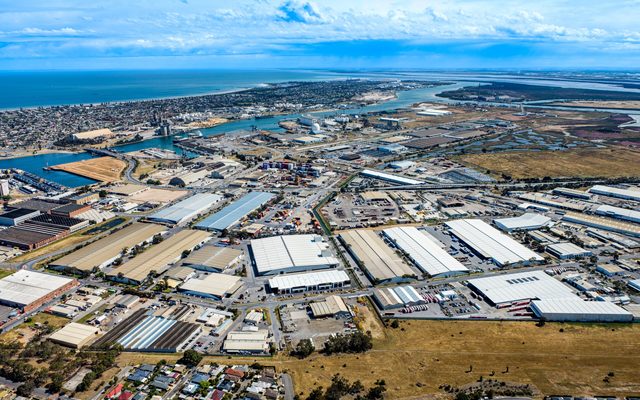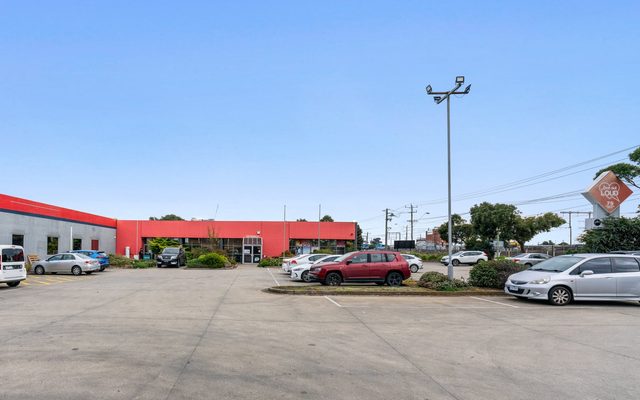This article is from the Australian Property Journal archive
SUPER prime industrial yields have tightened and heading towards peak levels of 2007, on the back strong local demand and growing foreign investors interest for defensive assets.

/* Style Definitions */
table.MsoNormalTable
{mso-style-name:”Table Normal”;
mso-tstyle-rowband-size:0;
mso-tstyle-colband-size:0;
mso-style-noshow:yes;
mso-style-priority:99;
mso-style-qformat:yes;
mso-style-parent:”;
mso-padding-alt:0cm 5.4pt 0cm 5.4pt;
mso-para-margin:0cm;
mso-para-margin-bottom:.0001pt;
mso-pagination:widow-orphan;
font-size:10.0pt;
font-family:”Times New Roman”,”serif”;
mso-fareast-language:EN-US;}
According to CBRE’s 2015 Q1 Industrial MarketView report, offshore investors are seeking out super prime assets with strong covenants and long lease terms that require minimal direct management.
CBRE regional director, industrial and logistical services, Matt Haddon said yield compression in the super prime sector of the market was underpinned by the increased appetite levels from investors.
“Prior to Q4 2014, offshore investment in the Australian industrial & logistics market had been relatively modest, with only a handful of foreign parties exposed to the sector. In the past six months however, momentum has continued to build, virtually doubling the number of offshore parties invested in logistics assets – with a host of further first time entrants currently assessing maiden acquisition opportunities.
“In 2014, transaction activity in the industrial sector was dominated by large portfolio sales, however, a shift in investor demand, particularly along the eastern seaboard, has underpinned super prime yield compression,” Haddon said.
CBRE Research shows yields in the super prime industrial market have compressed toward peak levels of 2007, with Melbourne reporting a gap of 175 basis points between super prime and secondary assets.
“With the yield spread between super prime and secondary assets much greater than at the market peak of 2007 (Sydney excluded), considerable opportunities continue to exist for investors who can manage market risk and take advantage of the greater returns on offer,” Haddon said.
In Q4 2014, offshore groups secured four assets with sub-7% yields, including 38-46 Bernera Rd, Prestons; 133-145 Lenore Drive, Erskine; 1 Griffin Crescent, Brendale; and 2-12 Banfield Court, Truganina.
CBRE senior research manager Mark Lafferty said foreign purchases of industrial property during 2014 represented 7% of total offshore commercial property sales during the year.
“Offshore investors are looking for defensive assets in the Australian marketplace to generate long-term income. They are attracted by Australia’s yield and income stability and don’t perceive a large risk to capital values for high quality assets,” Lafferty said.
Whilst foreign investors are looking for defensive assets, the report shows domestic buyers are moving up the risk curve, and less likely to acquire long leased super prime assets.
Instead they are open to taking on a degree of leasing and location risk in return for greater value.
Meanwhile a Colliers International report said yields are still way off the levels achieved in 2007.
Colliers found Sydney yields have compressed from 8.21% as at March 2013 to 7.45% in March 2015, Melbourne from 7.73% to 7.35% and Perth from 8.13% to 8% over the same period.
Whereas Brisbane and Adelaide saw yields expand. Brisbane increased from 8.43% to 8.48% whilst Adelaide rose from 8.23% to 8.37% over the period.
Colliers research also reported that industrial investment volumes surpassed $6 billion in 2014 – exceeding the previous high of $5.2 billion in 2007. It comes on the back of new RCA data that found that globally, the industrial sector posted the strongest overall gains in Q1 2015, up 95% from Q1 2014.
Colliers national director of research Nerida Conisbee said this high investment and high supply environment is leading to positive conditions for tenants with incentives starting to increase in some markets.
With the exception of Brisbane and Adelaide, incentives have risen in other capital cities.
Sydney from 10.1% in March 2013 to 10.9% in March 2015, Melbourne from 14% to 15% and Perth from 2.5% to 5% over the period.
Brisbane was stable at 7.2% whilst Adelaide declined from 13.1% to 12.5%.
“At the same time, yield compression is occurring, although we are still some way off the levels they reached at the end of 2007.
“Declining rents and firming yields have been a feature of office markets for some time now and we are now starting to see a similar dynamic in industrial markets,” Conisbee said. “Yields have firmed significantly over the past two years however the market has varied significantly geographically. Sydney, Melbourne and Perth yields have shown compression while Brisbane and Adelaide continue to increase,”
Conisbee said new developments are also on the rise with approximately 1.8 million sqm in the pipeline in 2015 – the highest level since 2009.
“We forecast that in 2015, Sydney and Perth are likely to continue to compress. Melbourne and Adelaide are likely to remain stable and Brisbane yields are likely to stabilise as investment demand continues to rise as investors look past the core industrial markets of Melbourne and Sydney,” she concluded.
Australian Property Journal



